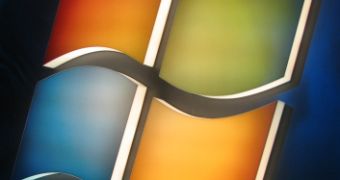Imagine that you could blend together the old Start Menu with the Taskbar, notifications, and gadgets and produce a Super Start Menu which would run full screen, offering all their capabilities combined. Now just take a look at the Start Screen in Windows 8, because this is what you essentially get. Chaitanya Sareen, program manager lead on the Core Experience Evolved team explained Microsoft’s perspective over how the Start Menu in Windows 7 evolved into the Start Screen in Windows 8, while also swallowing some of the most familiar Windows components.
The Start Menu evolved with every new release of Windows, but after the advent of Windows 7, Microsoft still had to deal with a number of usability challenges. Sareen enumerated some of them including
“• The menu feels cramped relative to available screen real estate when you try to see and navigate the full catalog of your programs.
• Search doesn’t have the space it deserves to quickly show you rich results across all sources of information, especially on larger screens.
• It’s hard to customize the menu to make it feel like it’s really yours.
• Icons and shortcuts are static and don’t leverage more of the pixels we see in modern graphical interfaces to surface connected scenarios.”
The issues enumerated above are fixed with the transition from Windows 7 to Windows 8. And at the same time, Sareen assures, they’re only a subset of the changes that the Redmond company planned for the next iteration of Windows.
“We also aim to unify Start with the rest of the system and enable new scenarios. An important part of design is sometimes taking a step back to fundamentally reimagine something from the ground up in order to bring more than incremental improvements to a product. This is especially true for something like Start that was born in a very different time when we didn’t use our PCs the way we do today,” Sareen said.
Following the release of the Windows Developer Preview a few weeks ago at BUILD, a number of tools emerged, designed with the sole purpose of bringing back the old Start Menu in Windows 8 Milestone 3 (M3).
This is a clear sign that there are many early adopters missing the old Start Menu, and failing to really warm up to the Start Screen instantaneously.
I remember something similar happening with the disappearance of Quick Launch from Windows 7. Considering the added functionality of the Taskbar in Windows Vista’s successor, Quick Launch is not only redundant but also irrelevant.
Still, there are users who have enabled it in Windows 7 and still use it, despite the fact that the Taskbar offers immensely superior functionality.
I expect the same to happen with the Start Screen, namely that some customers will be set in their ways and will not be willing to move away from the old Start Menu.
“The evolution of the Start menu is inextricably linked with the development of several other related, but disparate concepts, such as application launching, application switching, system notifications, and gadgets. The history behind these and the divergent paths they have each taken create an opportunity for us to do a much better job in providing a cleaner, more powerful, and more uniform way of working across the wide variety of apps and PCs we use today. The new Start screen embodies this effort,” Sareen explained.
According to Microsoft, Windows users shouldn’t really miss the Start Menu, since they were barely using it to launch applications any longer, preferring the Taskbar instead.
In a sense, with the Start Screen, the Redmond company is seizing the opportunity to make the Start menu into something much more than it is today.
“Improved search, more room for all your programs, tiles that are alive with activity, and richer customization all suddenly become possible when the venerable, but aging, Start menu is transformed into a modern Start screen. Stay tuned for our next post, where we’ll talk about the Start screen and how it represents the way we use our PCs today,” Sareen revealed.
Windows 8 Developer Preview Build 8102 Milestone 3 (M3) is available for download here.

 14 DAY TRIAL //
14 DAY TRIAL //